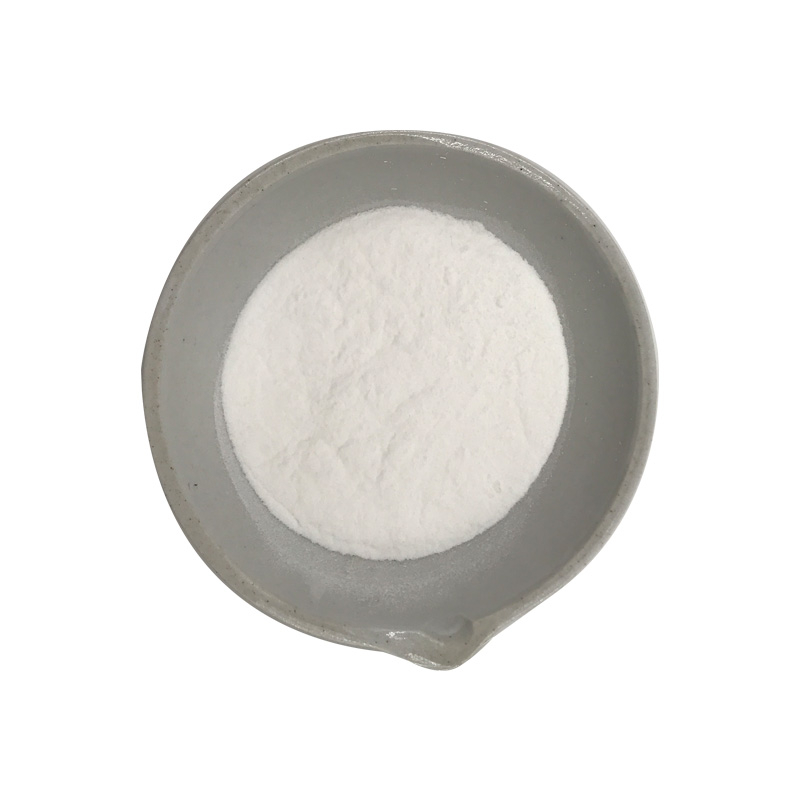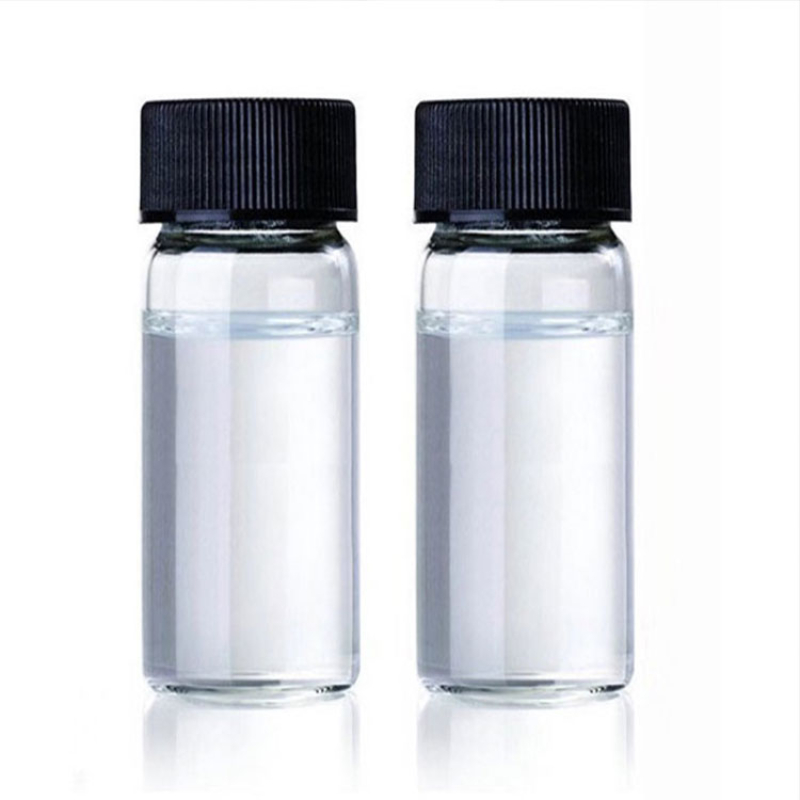Products Description of PRL-8-53 CAS#51352-87-5White crystal powderPRL-8-53 Chemical Propertiesstorage temp. under inert gas (nitrogen or Argon) at 2-8°Csolubility DMF: 30 mg/ml DMSO: 30 mg/ml Ethanol: 30 mg/ml PBS (pH 7.2): 10 mg/mlform A crystalline solidInChIInChI=1S/C18H21NO2.ClH/c1-19(14-16-7-4-3-5-8-16)12-11-15-9-6-10-17(13-15)18(20)21-2;/h3-10,13H,11-12,14H2,1-2H3;1HInChIKeyHLBBSWSJLPLPRU-UHFFFAOYSA-NSMILESC(OC)(=O)C1=CC=CC(CCN(CC2=CC=CC=C2)C)=C1.[H]ClFactory and Equipment ShowFast delivery timeInventory 2-3 working days New production 7-10 working days
Contact Now
Products Description of SCLEROGLUCAN CAS#39464-87-4Scleroglucan is a non-ionic water-soluble homopolysaccharide produced by filamentous fungi.
Contact Now
Products Description of Dextrin CAS#9004-53-9White amorphous powder, odorless, slightly sweet taste.Dextrin Chemical PropertiesMelting point 53.75-54 °Cdensity 0.8 g/cm3storage temp. Store at RT.solubility H2O: 0.1 g/mL hot, complete, yellow to very deep yellowform powdercolor yellowOdorodorlessWater Solubility Soluble in hot water (0.1 g/ml).Sensitive HygroscopicMerck 14,2953Dielectric constant2.2(Ambient)Stability:Stable. Combustible.
Contact Now
Products Description of Polysiloxanes CAS#63148-53-8Polysiloxanes (CAS#63148-53-8), also known as silicones or dimethyl siloxanes, are polymeric compounds characterized by their unique properties. Here is a rigorous and factual product description:Product Name: PolysiloxanesCAS Registry Number: 63148-53-8Physical Description:Polysiloxanes are typically colorless to pale yellow, oily liquids with a low surface tension.
Contact Now
Products Description of 1.1'-Binaphthyl-2.2'-diphemyl phosphine CAS#98327-87-81,1'-Binaphthyl-2,2'-bis(diphenylphosphine) (BINAP) is a powerful chiral auxiliary used as a homogeneous catalyst in certain asymmetric chemical syntheses.
Contact Now
Products Description of Inositol CAS#87-89-8Myo-inositol, also known as cyclohexanol, hexahydroxycyclohexane, cyclohexitol, myo-inositol, and inositol, is one of the B vitamins. There are 9 isomers due to the different orientations of the hydroxyl groups relative to the ring plane. body, 7 of which are non-optically active and 2 are optically active (left-handed and right-handed).In the natural chemical world, it exists in all biological tissues in free or combined form. It is a common component in animal and plant cells.
Contact Now
Products Description of Diethyl Ethoxymethylenemalonate CAS#87-13-8Ethoxymethylene, also known as diethyl ethoxymethylenemalonate, is a colorless, transparent and viscous liquid. It is an important pharmaceutical intermediate and is widely used in the synthesis of medicines, pesticides and auxiliaries.
Contact Now
Products Description of Polymethylene polyphenyl polyisocyanate CAS#9016-87-9Brown transparent liquid with pungent odor.Polymethylene polyphenyl polyisocyanate Chemical PropertiesBoiling point 392 °C5 mm Hgdensity 1.2 g/mL at 25 °C(lit.)vapor density 8.6 (vs air)refractive index n20/D 1.634Fp >230 °Fstorage temp. Refrigerator, Under inert atmospheresolubility DMSO (Sparingly), Ethyl Acetate (Slightly), Methanol (Soluble)form Oilcolor Yellow to OrangeStability:Stable.
Contact Now
Products Description of 3,4-epoxycyclohexanecarboxylate CAS#2386-87-0The alicyclic epoxy resin 3,4-epoxycyclohexylmethyl 3,4-epoxycyclohexylcarboxylate overcomes the shortcomings of traditional bisphenol A epoxy resin, such as poor weather resistance, high temperature resistance, and poor impact resistance, and has received great attention from all walks of life.
Contact Now
Products Description of Diethyl Malonate 99.5% CAS#105-53-3Malonic acid and its derivatives are widely used in pharmaceuticals, spices, food additives, polyester and other industries, and are important fine chemical raw materials and intermediates.
Contact Now
Sodium formate CAS#141-53-7The main purpose of sodium formate as follows:Sodium formate can be used as chemical analysis reagent, used for determination of arsenic and phosphorus, also used as a disinfectant, mordant and so on.
Contact Now
Products Description of J acid CAS#87-02-5J acid is light gray powder or granules, and the pure product is white needle crystal. Soluble in hot water, hardly soluble in cold water, almost insoluble in ethanol.
Contact Now
Products Description of 5-Bromo-8-nitroisoquinoline CAS#63927-23-1It is a light yellow solid powder at room temperature and pressure.
Contact Now
Products Description of 3,4-Dihydro-2H-pyran CAS#110-87-23,4-Dihydro-2H-pyran, referred to as DHP, is an organic intermediate often used as a protective group.
Contact Now
Dimethoxymethane CAS#109-87-5Chemical Properties:Dimethoxymethane, also called methylal, is a colorless flammable liquid with a low boiling point, low viscosity and excellent dissolving power. It is stable in the presence of alkalis and mild acids, and to high temperatures and pressures. It differs from other ethers in that it forms only minute omounts of peroxides. It will dissolve such synthetic resins as nitrocellulose, cellulose acetate and propionate, ethyl cellulose, vinyl, "Epons" and polystyrene, and also many of the natural gums and waxes.
Contact Now
Products Description of (2S)-1-(Chloroacetyl)-2-pyrrolidinecarbonitrile CAS#207557-35-5 (2S)-N-Chloroacetyl-2-cyanopyrrole is a key intermediate of the dipeptidyl peptidase IV inhibitor vildagliptin (V305000)(2S)-1-(Chloroacetyl)-2-pyrrolidinecarbonitrile Chemical PropertiesMelting point 52-53 °CBoiling point 363.1±37.0 °C(Predicted)density 1.27±0.1 g/cm3(Predicted)storage temp. under inert gas (nitrogen or Argon) at 2-8°Csolubility Chloroform (Slightly), DMSO (Slightly), Methanol (Slightly)form Solidpka-4.65±0.40(Predicted)color Pale Yellow to Ligh
Contact Now
Products Description of (R)-(-)-3-Carbamoymethyl-5-methylhexanoic acid CAS#181289-33-8(R)-(-)-3-(Carbamoylmethyl)-5-methylhexanoic acid is solid at room temperature and pressure, soluble in dimethyl sulfoxide, N,N-dimethylformamide and other organic solvents; it has poor solubility in ether solvents and can be used as an intermediate in chiral organic synthesis.
Contact Now
Products Description of Ethoxyquin CAS#91-53-2Ethoxyquin is abbreviated as EQ or EMQ, also known as ethoxyquin, and its trade names are Sandoquin, Sandoquin, Hupiling, and Ethoxyquin. A yellow to tan viscous liquid with a special odor. Insoluble in water, soluble in benzene, gasoline, ether, alcohol, carbon tetrachloride, acetone and alkyl dichloride Chemicalbook. It is easy to oxidize under natural light. When exposed to air and oxygen, the color becomes dark brown and the viscosity increases. It should be stored in an airtight container away from light.
Contact Now
Methylcyclohexane CAS#108-87-2Methylcyclohexane, an alkene, is a colorless liquid with a faint benzene-like odor. The smell thre-shold is 630 ppm (this is above the OEL). Molecularweight = 98.21; Specific gravity (H2O:1)= 0.77; Boilingpoint = 101℃; Freezing/Melting point= - 127℃; Vaporpressure= 37 mmHg at 20℃; Flash point= - 3.9℃ (cc),- 5.9℃ (oc); Autoignition temperature = 258℃. Explosivelimits: LEL= 1.2%; UEL = 6.7%.
Contact Now
Products Description of Manganese sulfate CAS#7785-87-7Manganese sulfate (English: Manganese sulfate) is a light pink monoclinic fine crystal at room temperature. It is easily soluble in water and insoluble in ethanol. It starts to lose crystal water when heated above 200℃, loses most of the crystal water at about 280℃, becomes anhydrous salt melt at 700℃, and begins to decompose at 850℃, releasing sulfur trioxide, sulfur dioxide or oxygen.Manganese is an element of Group VII of the periodic table. Manganese in a free state is not found in nature.
Contact Now
Products Description of 5-CHLORO-3-METHYLBENZO[B]THIOPHENE CAS#19404-18-33-Methyl-5-chlorobenzothiophene is a pharmaceutical intermediate. 5-CHLORO-3-METHYLBENZO[B]THIOPHENE CAS#19404-18-3 Chemical PropertiesMelting point 33 °CBoiling point 87 °Cdensity 1.293±0.06 g/cm3(Predicted)storage temp. 2-8°Csolubility soluble in Methanolform powder to lumpcolor White to Yellow to OrangeCAS DataBase Reference19404-18-3(CAS DataBase Reference)Safety InformationHazard Codes Xi,XnRisk Statements 36/37/38-22Safety Statements 26-37/39Hazard Not
Contact Now
Products Description of OXALIC ACID CAS#68603-87-2Oxalic acid standard solution is mostly used for quantitative detection of oxalic acid content in food and medicine. For example, oxalic acid standard solution can be used to determine the oxalic acid content in edible mushroom broth.
Contact Now
Products Description of Potassium phosphate CAS#778-53-2Potassium phosphate is a reagent with high buffering capacity, It serves as a buffering agent to regulate pH, Typically used as a component for a wide variety of media used in the culture of microorganisms, as a component in phosphate buffered saline (PBS). It occurs in several forms: monobasic, dibasic, and tribasic (K3PO4). Most pH neutral potassium phosphate buffer solutions consist of mixtures of the monobasic and dibasic forms to varying degrees, depending on the desired pH.
Contact Now
Products Description of Direct Pigment Geen 7 CAS#1328-53-6Pigment Green-7 is a water-dispersed pigment, exceptionally lightfast, yields an intense phthalo green, and is formulated specifically for the coloring of paper pulp. It is easy to use and requires no rinsing; directions included. It has high tintorial strength and excellent fastness to solvents, heat, light, & weathering1,2. To ensure maximum color intensity and proper adhesion to the pulp, a retention agent must be added to the pulp before the pigment is applied1. It belongs to the Phthalocyanine Green Pigment2.
Contact Now






















![5-CHLORO-3-METHYLBENZO[B]THIOPHENE CAS#19404-18-3](https://d3rnfhc14zcmdf.cloudfront.net/cdn/ff/SQtnDOdiT42PpMs1NszZi7Tv_d_DUIp_Dx3j0P5hPM4/1720092385/public/styles/chanpinzhutu/public/2024-07/%E5%BE%AE%E4%BF%A1%E5%9B%BE%E7%89%87_20240702152530_3.jpg?itok=CrylVEjT)










